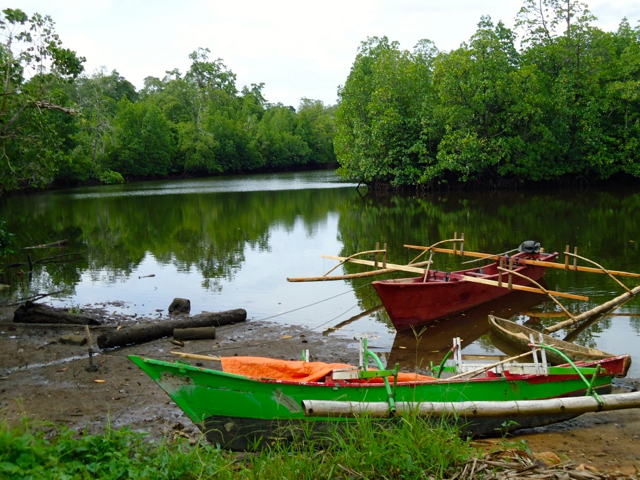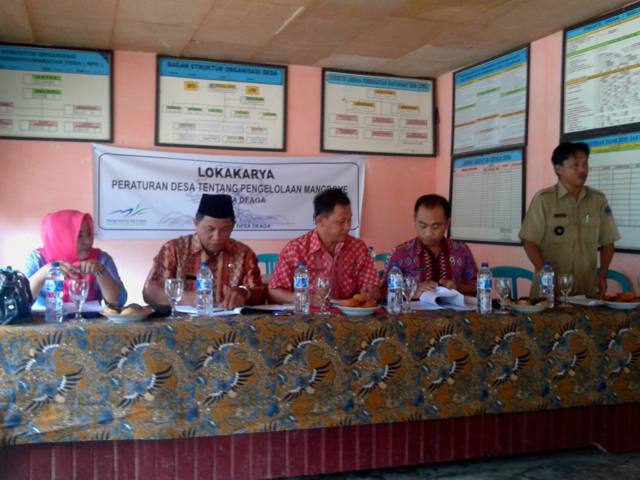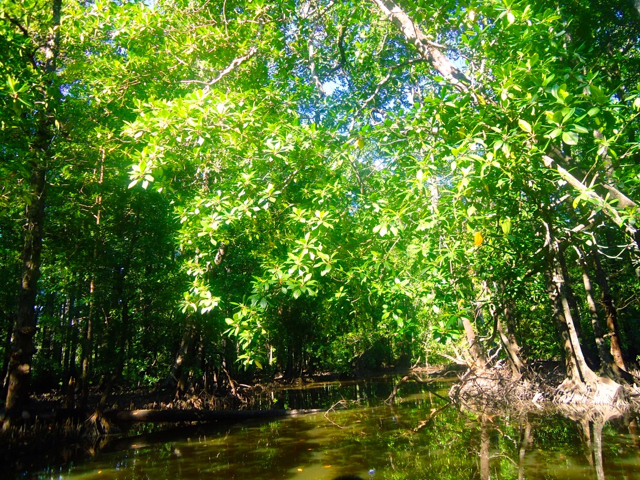- In May, the village of Deaga in North Sulawesi agreed to conserve 150 hectares of mangroves, which store huge amounts of carbon.
- Under the terms of the agreement, villagers can still harvest dead mangrove wood and nipa palm leaves for home-building and can pick fruit.
- The villagers want to see the protected area incorporated into the district’s spatial plan to ensure that it is respected.
Preserving mangrove forests is instrumental to bringing down emissions rates in Indonesia, a leading carbon polluter. Residents of Deaga village in North Sulawesi province also believe it is key to safeguarding their economy.
In May, the village agreed to conserve 150 hectares of mangroves its residents depend on for their livelihoods. The conservation zone was split into four sites, some of which include coral reefs.
“The destruction of the mangroves is increasingly threatening the sustainability of coastal and marine resources and their ability to support the people,” said Ruslani Mokoginta, chief of Deaga.
Mangroves are semi-submerged trees and shrubs that grow in tropical estuaries. Almost one quarter of the world’s remaining stands, an area half the size of Belgium, lie in Indonesia, according to the Center for International Forestry Research, a think-tank. Mangroves also store an inordinate amount of carbon.
For Deaga, protecting mangrove ecosystems will allow creatures like crabs and shellfish to flourish, aiding the local economy, Ruslani said.


Under the terms of the new village regulation on the mangroves’ protection, while logging or land conversion in the protected zone is strictly prohibited, locals will be allowed to harvest dead mangrove wood and the long, feathery leaves of the nipa palm (Nypa fruticans) for home-building. Limited harvesting of mangrove fruit will also be permitted.
As part of a broader plan to rehabilitate ailing mangroves, next year locals will team with conservation group Mangroves For the Future to plant 4,000 trees in one of the four sections.
The central aim of the regulation, however, is to get the protected zones included in the village’s official land-use map.
“We will coordinate with the [district] forestry office to make the conservation zones part of the village’s spatial plan in light of the flora and fauna aspects and in consideration of the social, cultural and community aspects,” Ruslani said.
The local spatial plan is renegotiated every five years and is up for reconsideration in three years, he added.

According to Maxi Limbat, head of the forestry office in Bolaang Mongondow Selatan district, the scarcity of inhabitable land in the area also needs to be considered when drawing up the new spatial plan.
Deaga already overlaps with the 800-hectare Kombot Protected Forest, hampering the ability to build new settlements, Maxi said. Nonetheless, he still sees safeguarding the district’s 1,000 hectares of mangroves as an important task.
“We have to limit the damage,” he said. “The district government must strive to pass regulations to protect the mangroves, not only in Deaga, but in all of Bolaang Mongondow Selatan.”
CITATION:
Themmy Doaly. “Keren! Desa Deaga Punya Aturan Lindungi Hutan Mangrove.” Mongabay-Indonesia. 2 June 2015.
